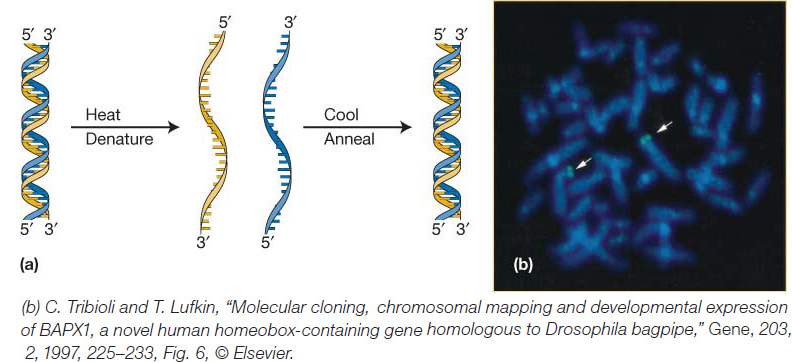
(a) The two strands of the DNA double helix can be dissociated by heat in aqueous solutions. Upon cooling under controlled conditions, strands reassociate, or hybridize, with their complement. (b) A cloned copy of the human BAPX1 gene was tagged with a green fluorescent dye. The fluorescent- t-
[(b) C. Tribioliand T. Lufkin, “Molecular cloning, chromosomal mapping and developmental expression of BAPX1, a novel human homeobox- 5-